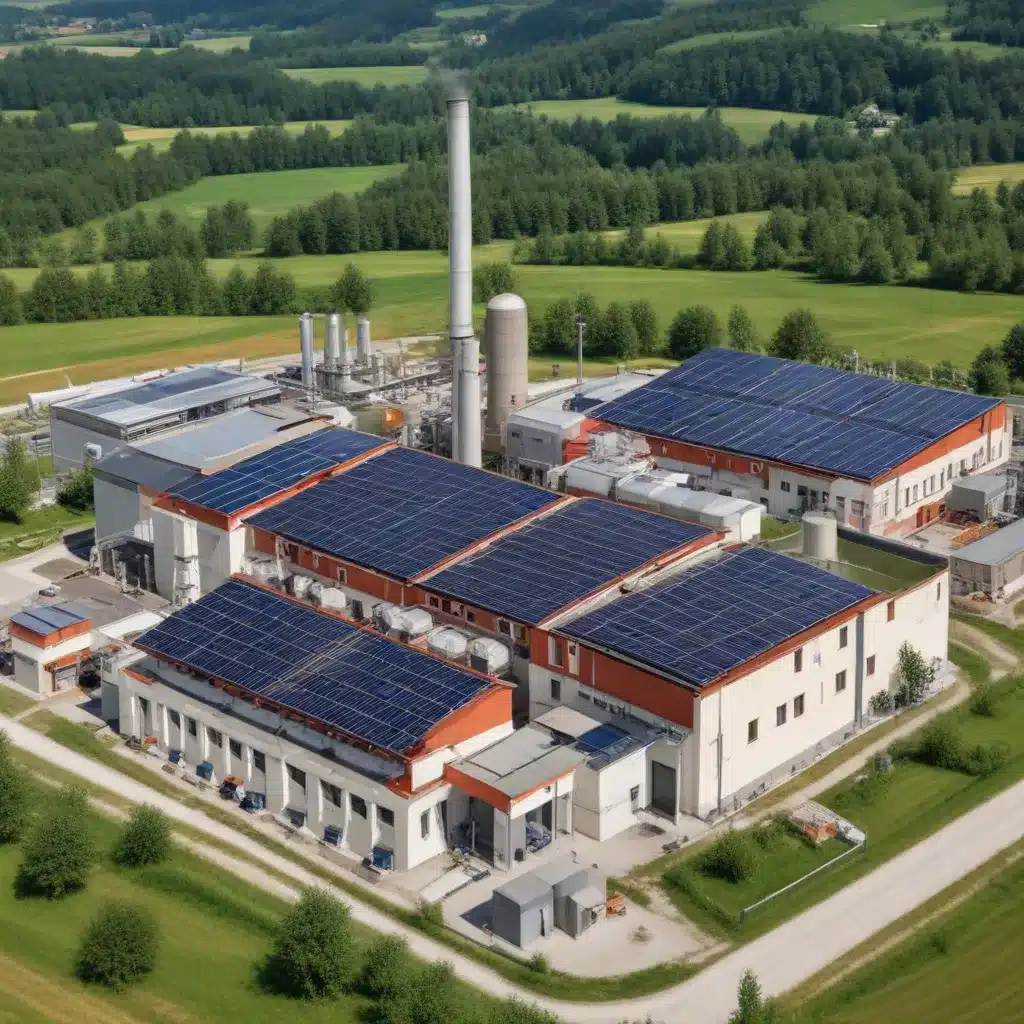
The Rise of Solar-Powered District Heating
In the quest for sustainable and efficient heating solutions, the integration of solar thermal energy into district heating systems has emerged as a promising strategy. Germany, known for its ambitious renewable energy targets, has been at the forefront of this innovative approach, with the town of Weilheim serving as a prime example of its potential.
Weilheim, a picturesque municipality in southern Germany, has made significant strides in harnessing the power of the sun to heat its community. By leveraging solar thermal technology, the town has been able to reduce its reliance on traditional fossil fuel-based heating systems, paving the way for a more eco-friendly and cost-effective heating solution.
Transitioning to Solar-Powered District Heating in Weilheim
The journey towards solar-powered district heating in Weilheim began with a comprehensive assessment of the town’s existing heating infrastructure. Researchers from the Fraunhofer Institute for Solar Energy Systems collaborated with local authorities to evaluate the feasibility and potential benefits of integrating solar thermal energy into the district heating network.
Through detailed analyses and simulations, the researchers determined that Weilheim’s geographic location, climate, and building stock were well-suited for the implementation of a solar-powered district heating system. The town’s abundance of sunny days and its existing district heating infrastructure provided the ideal foundation for the project.
The Weilheim Solar Thermal District Heating System
The solar thermal district heating system in Weilheim is a marvel of engineering and environmental sustainability. At the heart of the system lies a large-scale solar thermal collector field, which covers an area of approximately 7,000 square meters. These state-of-the-art collectors harness the sun’s energy, converting it into thermal energy that is then stored in a vast underground thermal energy storage system.
The stored thermal energy is then distributed throughout the town’s district heating network, providing heating and hot water to residential, commercial, and municipal buildings. This integrated approach ensures that the solar thermal energy is utilized efficiently, reducing the need for fossil fuel-based heating sources.
Measuring the Impact: The Weilheim Case Study
The implementation of the solar thermal district heating system in Weilheim has yielded impressive results, both in terms of environmental impact and cost-effectiveness. According to a recent study published in the Journal of Energy Storage, the system has significantly reduced the town’s carbon footprint, contributing to its overall sustainability efforts.
The study found that the solar thermal district heating system in Weilheim has the potential to reduce the town’s annual CO2 emissions by up to 5,000 tons. This remarkable achievement highlights the significant role that solar thermal energy can play in the decarbonization of heating systems, particularly in the context of district heating networks.
Furthermore, the study revealed that the solar thermal district heating system in Weilheim has also proven to be economically viable, with the potential to lower heating costs for local residents and businesses. This financial benefit, coupled with the environmental advantages, makes the Weilheim case a shining example of the transformative power of solar thermal energy in the realm of district heating.
Scaling Up Solar Thermal District Heating
The success of the Weilheim solar thermal district heating system has not gone unnoticed. The project has garnered significant attention from both the scientific community and policymakers, who recognize its potential for replication in other parts of Germany and beyond.
In fact, a recent report by the European Commission’s Joint Research Centre highlighted the Weilheim case as a model for other municipalities to follow. The report emphasizes the need for a coordinated, nationwide approach to the deployment of solar thermal district heating systems, as part of a broader strategy to enhance the sustainability and resilience of Germany’s energy infrastructure.
Overcoming Challenges and Barriers
Despite the overwhelming success of the Weilheim solar thermal district heating system, the road to its implementation was not without its challenges. The integration of a large-scale solar thermal system into an existing district heating network required careful planning, technical expertise, and collaboration among various stakeholders.
One of the key challenges was the need to ensure the seamless integration of the solar thermal system with the existing district heating infrastructure. This required advanced control systems, efficient thermal energy storage, and the optimization of the system’s operating parameters to maximize the utilization of the solar thermal energy.
Additionally, the initial investment required for the installation of the solar thermal collectors and the associated infrastructure posed a significant financial hurdle. However, through innovative financing schemes, government incentives, and the long-term cost savings, the Weilheim project was able to overcome these barriers and demonstrate the viability of solar thermal district heating.
The Future of Solar Thermal District Heating
The success of the Weilheim solar thermal district heating system has paved the way for a more widespread adoption of this technology across Germany and beyond. As the world continues to grapple with the challenges of climate change and the need for sustainable energy solutions, the integration of solar thermal energy into district heating systems has emerged as a promising path forward.
The latest research suggests that the expansion of solar thermal district heating could play a crucial role in achieving Germany’s ambitious renewable energy targets, while also contributing to the broader European Union’s goals of reducing greenhouse gas emissions and promoting energy efficiency.
As more municipalities and policymakers take note of the Weilheim case study, the future of solar thermal district heating looks increasingly bright. By harnessing the power of the sun and leveraging the efficiencies of district heating networks, communities can transition towards a more sustainable and cost-effective heating solution, paving the way for a greener and more resilient energy landscape.
At Wood Stove Heaters, we are excited to see the continued advancements in solar thermal energy and its integration into district heating systems. As experts in the field of wood stoves and heating solutions, we remain committed to providing our readers with the latest insights and practical tips on sustainable heating methods, including the promising developments in solar thermal district heating.


